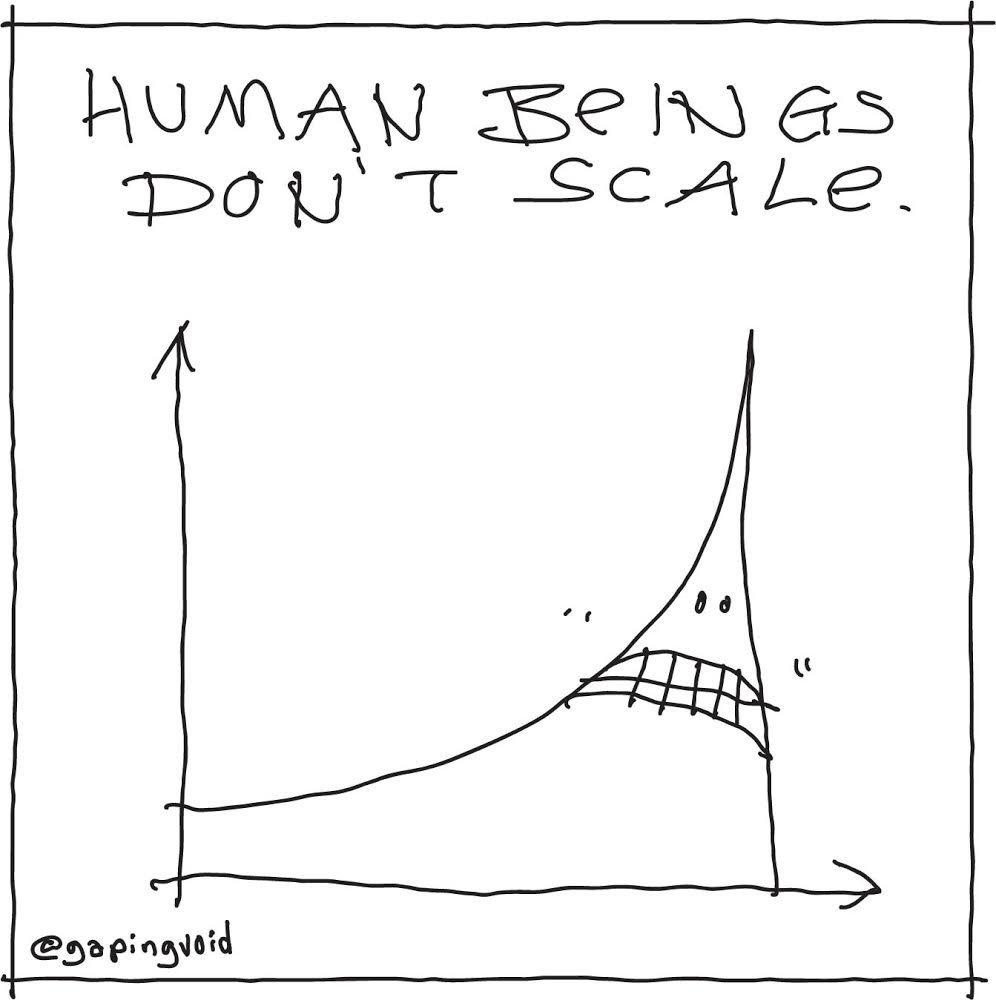In my current role with Sysco, I am in the midst of building out a design organization. We are rounding up designers from all over the company, and country, to assemble them into a single unit. Controlling costs is one reason, another is to help protect the brand and identity guidelines. This reorg started well over a year ago and the company got to a point where it needed some help to finish. That’s where I came in. Today I’m celebrating my 60th day on the job, and wanting to share some learnings:
The great philosopher, Hugh MacLeod recently noted that “Humans do not scale” in response to a quip I tweeted out a week or so ago. He could not be more right. People do not scale, but in order for the organization to grow, it has to be able to scale.

The tweet was my reaction to a comment one of my coworkers made while we were defining roles and responsibilities for the designers to follow when purchasing stock images through our new enterprise license.
I made some fields on the request form mandatory – things like the project owner’s name, a project number and the like. She felt that even though inputting this small amount of info did not take much time, it nonetheless requires the designers to eat up a little more time. I understand that many of the designers previously had access to their own license, which allowed them to do whatever they wanted whenever they wanted. According to my coworker, this little extra effort was too much to ask.
I said they would do it and I am unbending on this issue.
Another great philospher once said “The big picture is made of of millions of tiny details.” I actually tweeted that out a few months ago, thinking that someone much smarter than me must have said it already, but I haven’t found a source yet. (It’s a great saying.)
Those tiny details are the things that will enable the organization to have the ability to grow and thrive. Tiny details like metadata may not seem terribly important today, but it will become a huge issue in the coming months and years as more distance is put between the designer and their project. A good memory will only get you so far.
Getting out of that “me” mindset and into an “us” mindset is one of the central challenges to make this effort succeed. For anyone undertaking a reorg like this, I recommend reading Todd Henry’s Herding Tigers, as he hits the nail squarely on the head.
Scaling up is not easy. It requires you to keep one eye on the current bevy of projects and clients while the other keeps looking ahead to the future. This is probably the hardest part of the reorg – managing the change.
The group has to find ways to strike a balance that ensures current customers are happy while going through the change. Customers are not always receptive to change. Go figure. They’re looking out for their projects and have little concern for the future state you are working on, no matter how much it may benefit them.
You can’t just go into work everyday and just do your job. Do the work. You have to always be thinking three steps ahead, about processes and procedures. This is how you and your team will work. This is no easy feat. Nor is it fun.
Building an organization is not easy. Of course, as with everything in life, you have to work for the things that are worthing having. That’s what I tell my kids all the time.
